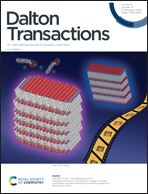A facile morphology tunable strategy of Zn-MOF derived hierarchically carbon materials with enhanced supercapacitive performance through the solvent effect†
Abstract
Metal–organic framework (MOF) derived porous carbon materials have been widely applied as active materials for supercapacitors due to their large specific surface area and ordered pore structure. This paper presents a facile and effective strategy to regulate the morphology of a zinc-based metal–organic framework (Zn-trimesic acid, Zn-BTC) by adjusting the ethanol content in a solvent, which can effectively change the pore structure of Zn-BTC derived porous carbon (PC). The optimal PC prepared in 50% ethanol displays a rodlike structure with a large specific surface area (SSA) of 1930 m2 g−1 and an average pore size of 2.9 nm. This material shows an excellent rate performance with 78.8% capacitance retention when the current density increases from 1 A g−1 to 100 A g−1 and outstanding electrochemical stability with only 2.2% decline of capacitance after 200 000 cycles at 50 A g−1. Moreover, the assembled symmetrical capacitor shows a high energy density of 16.09 W h kg−1 at 698 W kg−1 and 11.89 W h kg−1 at a high power density of 41.56 kW kg−1. This method would provide a new pathway for the preparation of carbon materials with an adjustable pore size for high-performance supercapacitors.



 Please wait while we load your content...
Please wait while we load your content...